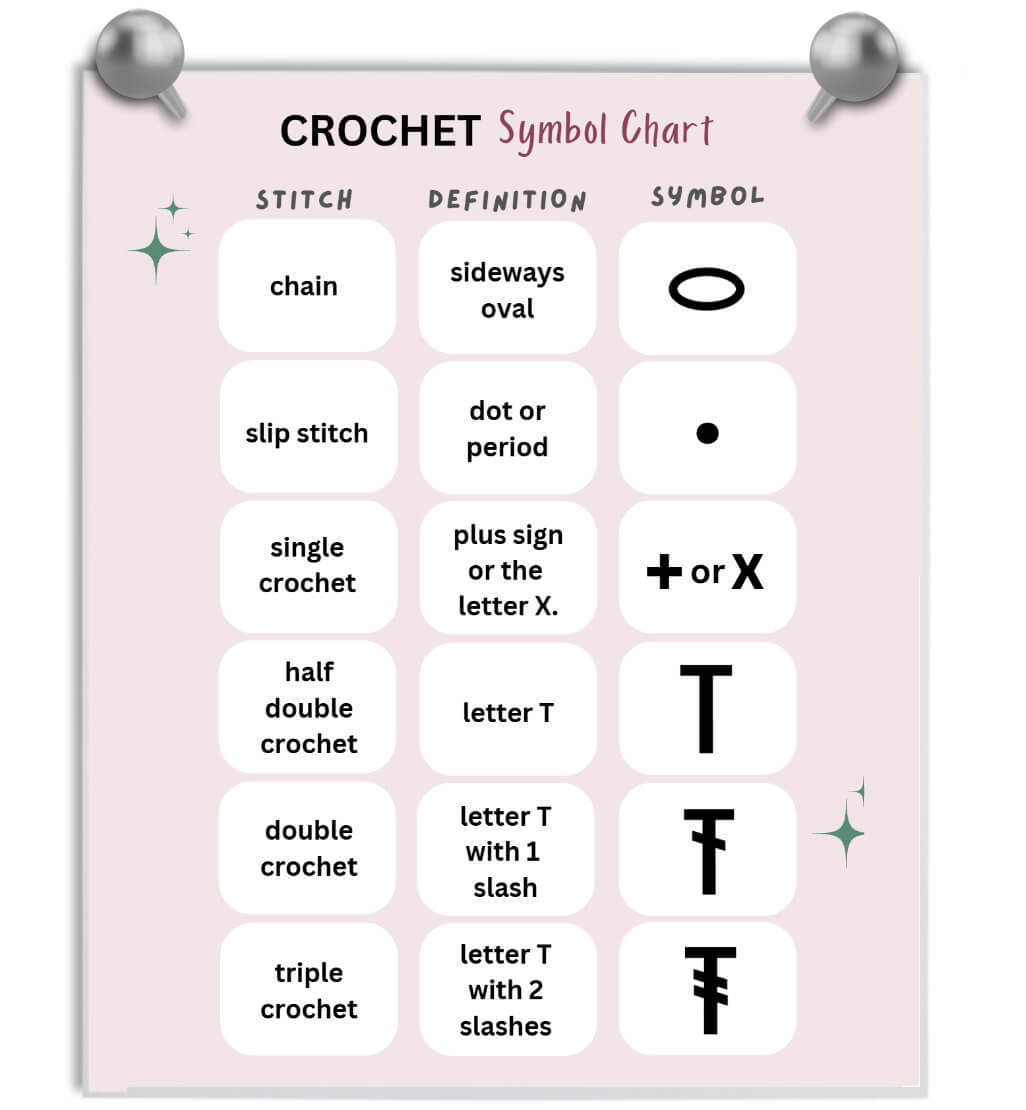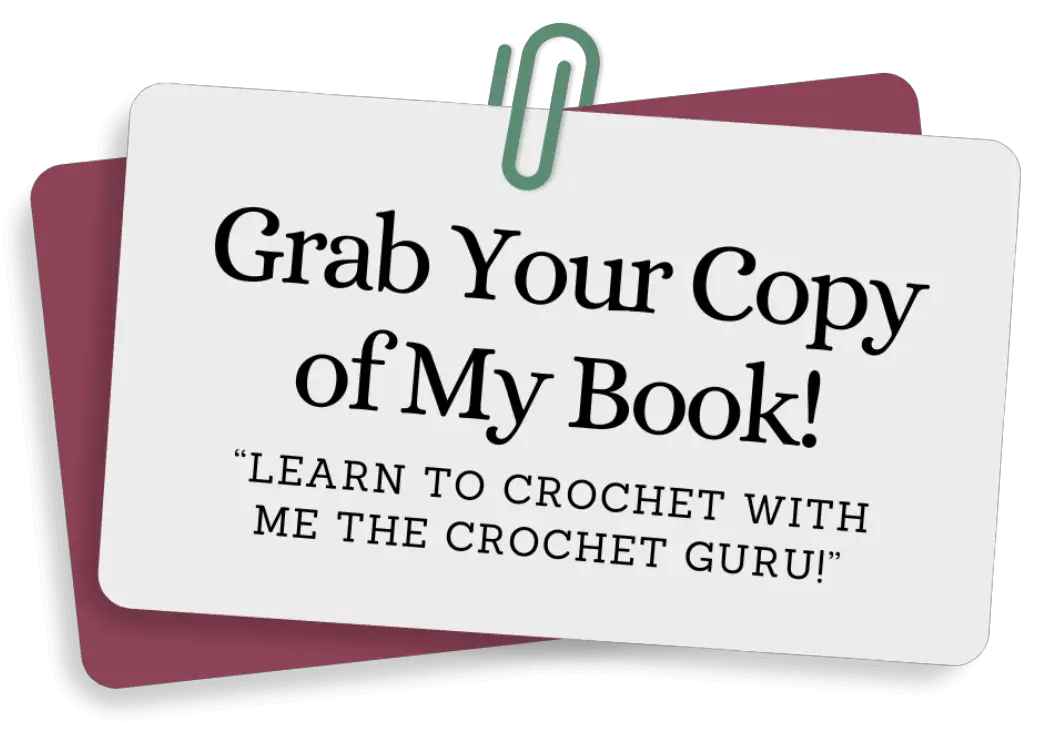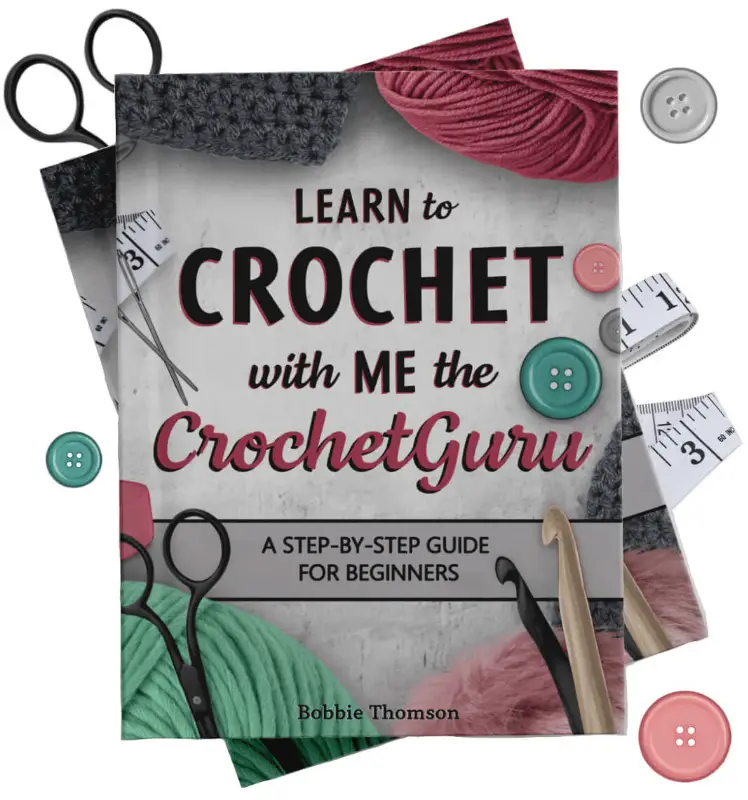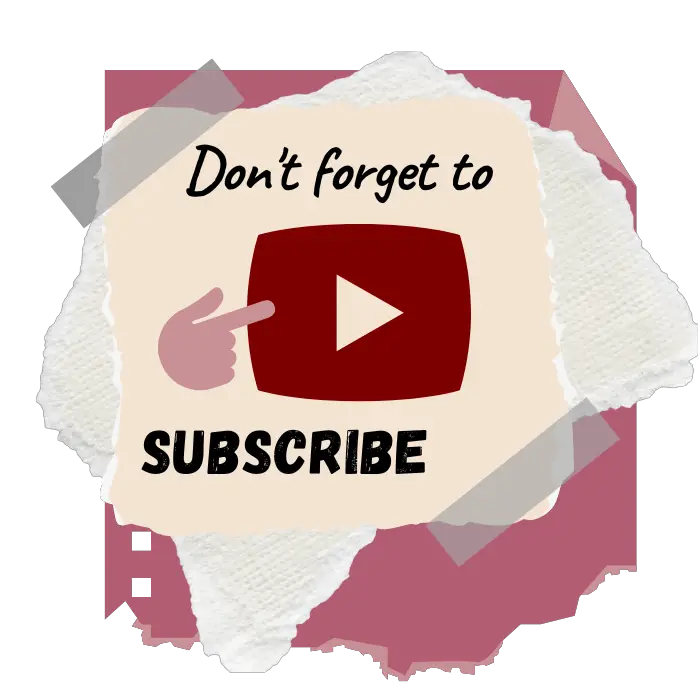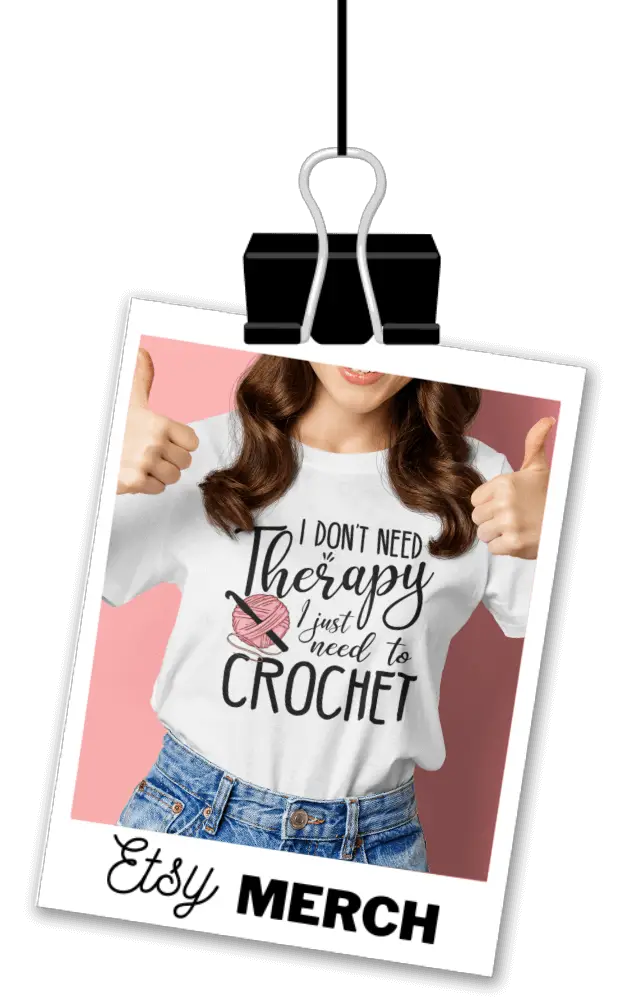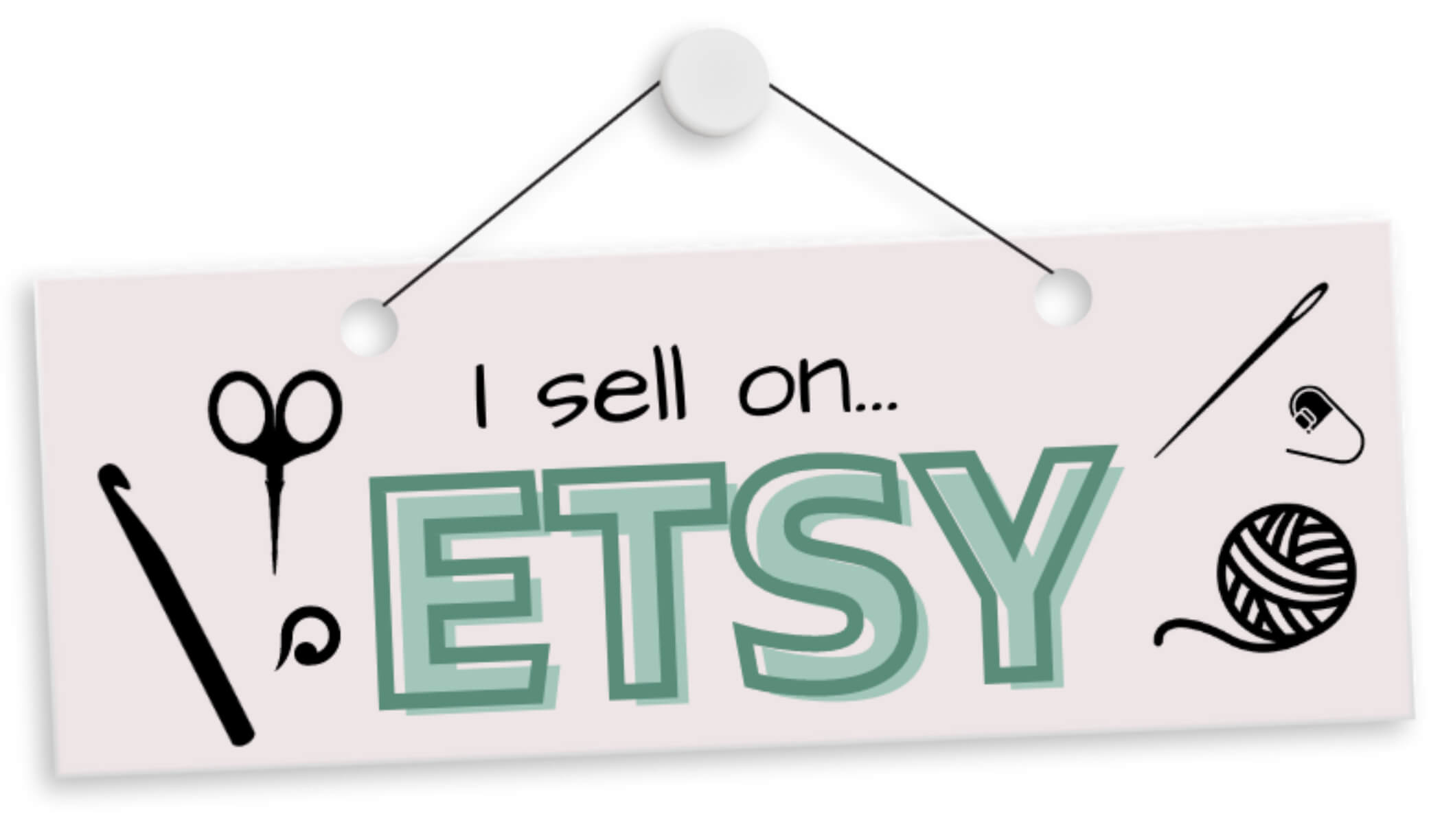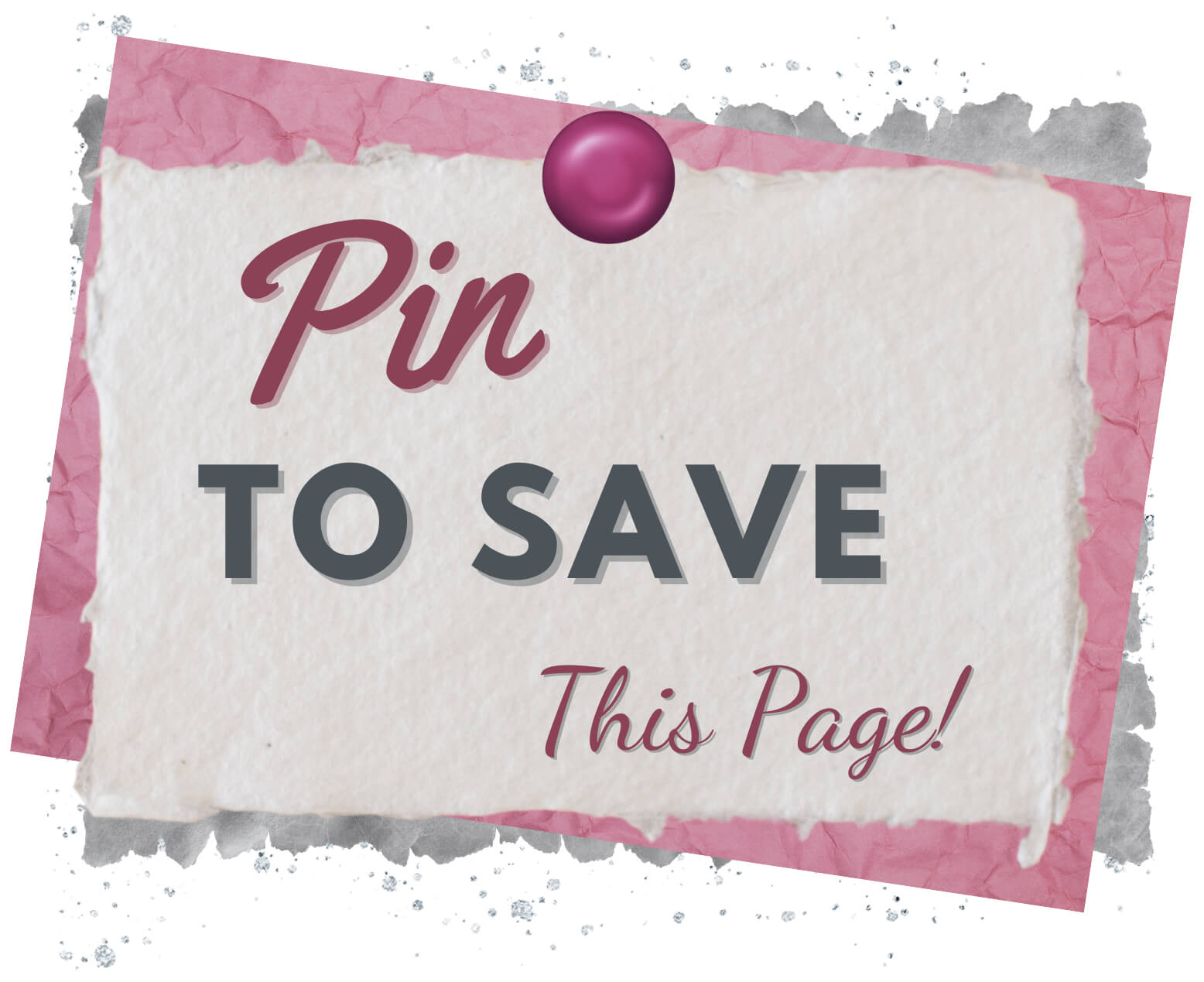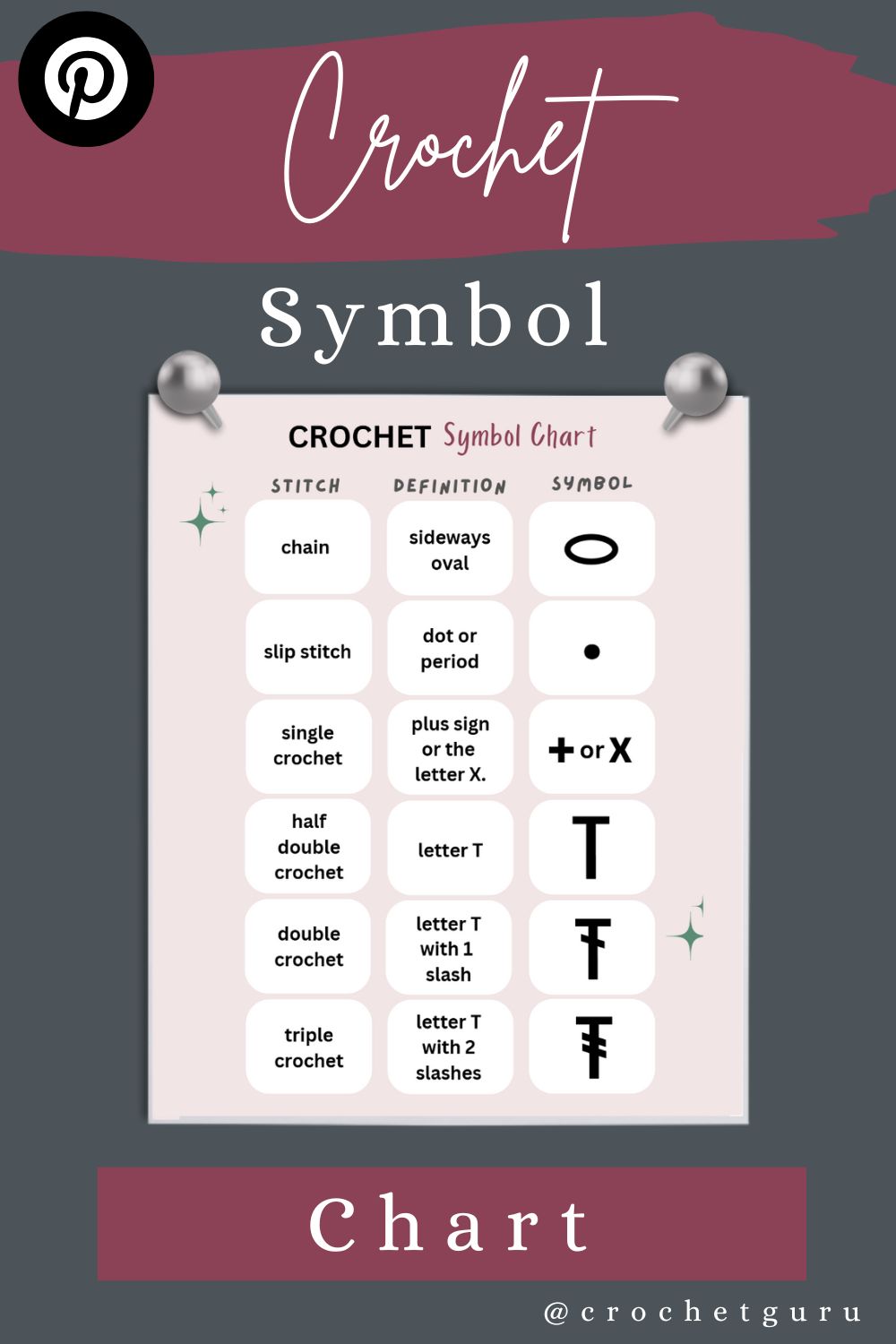How to Read Crochet Symbol Charts
Learn how to read crochet symbol charts and start using chart patterns right away!
Crochet symbol charts are an excellent way to advance your crochet skills. You can easily create beautiful and intricate patterns if you know how to read them correctly. At first, the charts may appear intimidating, but with a little practice, you'll quickly gain the confidence to tackle complex projects. I'll show you how to read and interpret crochet symbol charts in this article so you can express your creativity with beautiful crochet designs!
Crochet Symbol Chart - Free Download
If crochet symbol charts have you scratching your head, don’t worry—you’re not alone! These little symbols might look confusing at first, but they’re actually the ultimate cheat sheet for crochet patterns. Think of it like a crochet GPS that shows you exactly where to go without all the extra wordy instructions.
In this post, I’ll break it down super easy so you can decode those funky symbols and start hooking like a pro in no time.
Plus, I’ve got a free download for you—a handy reference chart to keep by your side while you crochet.
Grab it, print it, and thank me later when you’re breezing through patterns like a crochet queen.
Ready to level up your skills and impress your crochet crew? Let’s get into it!
Unraveling the Mystery of Crochet Symbol Charts
More and more, stitch charts are being used in crochet patterns instead of or in addition to words to describe a pattern stitch. Here are the crochet symbols that the Craft Yarn Council members have agreed to use because they are the clearest and easiest to draw and read. Always look at the pattern key to find out what other symbols mean.
The table below will help you learn how to read crochet symbol charts - Here are the symbols and what they mean:
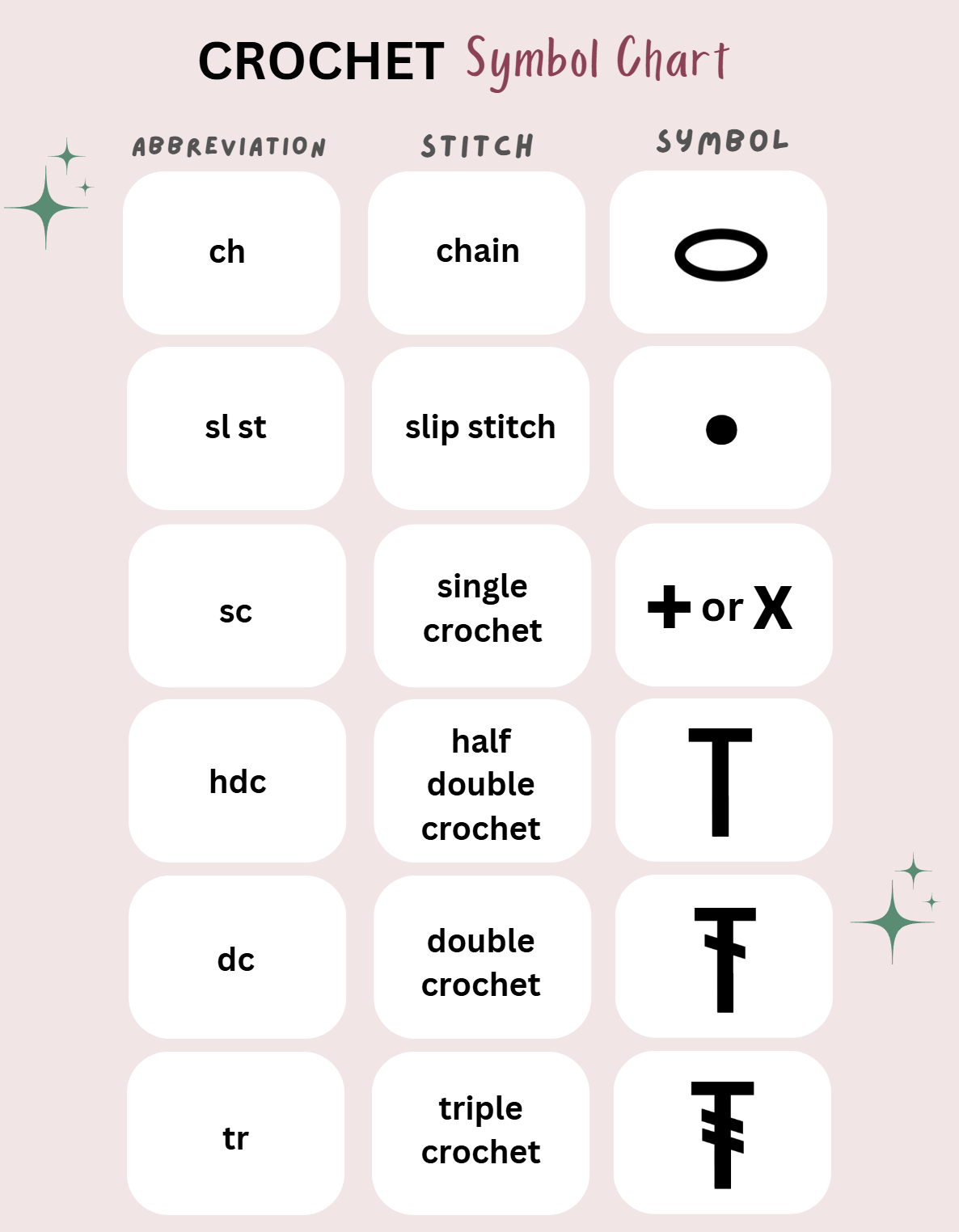
What Are Crochet Symbol Charts?
Crochet symbol charts are diagrams that use symbols to represent different types of crochet stitches. Crochet design charts provide visual aids to ensure that crocheted items turn out as intended. Chain, single crochet, and double crochet stitches, among others, are represented by their respective symbols. Crocheters can quickly learn when and what kind of stitches to utilize by referring to the provided chart.
Notice how the crochet symbols look very similar to the crochet stitches. A common representation of a single crochet symbol is represented by a short cross or a symbol that looks like the letter "X". You know it's time to work a single crochet stitch whenever you see either of these symbols in a crochet pattern. Crochet symbols also include a tall "T" for the half double crochet and a tall "T" with a single slash through it for the double crochet.
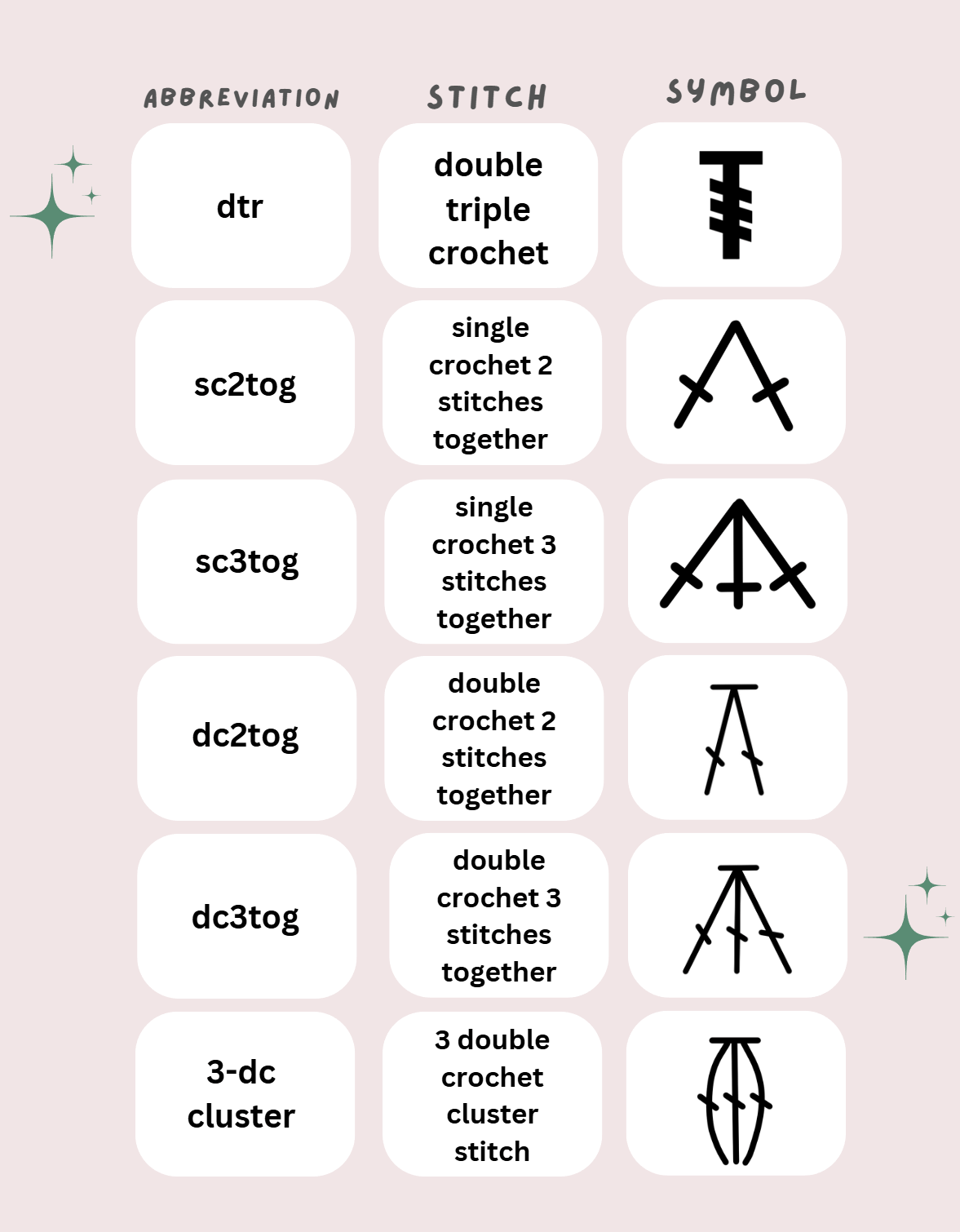
Why Are Crochet Symbol Charts Used?
Crochet symbol charts are helpful because they show crochet patterns clearly and concisely. Instead of writing out each stitch, the chart uses symbols to show quickly where and when to use each stitch. This makes it clearer and easier to figure out what the pattern wants. It also makes it easier for crocheters to change the pattern without writing the whole thing over again.
You can also use crochet symbol charts to show how to work the pattern in multiple languages. For example, a chart could show how to work a pattern in English and Spanish, making it easier for people who crochet in different languages to learn new stitches and techniques.
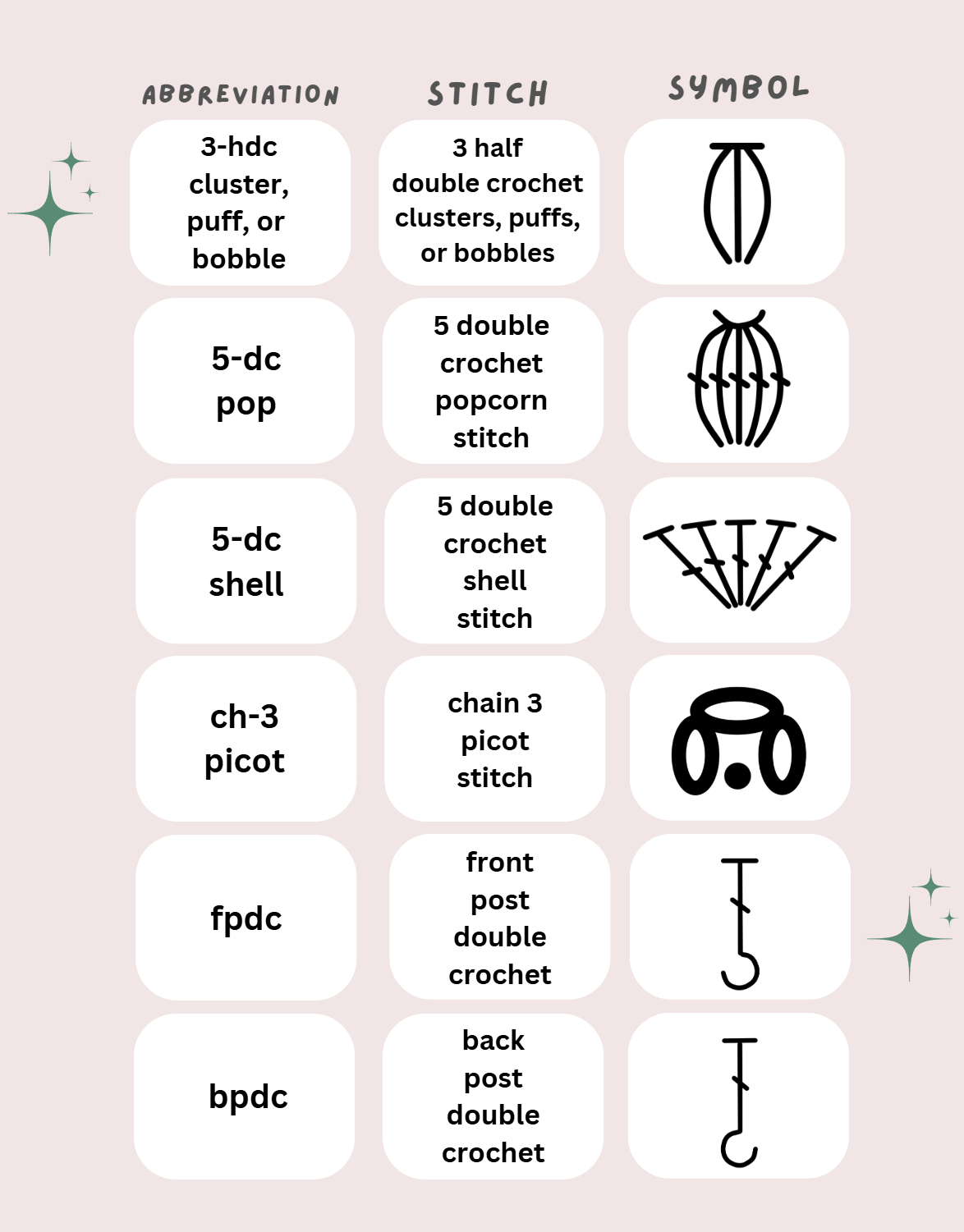
How to Read Crochet Symbol Charts?
Reading crochet symbol charts can be complicated at first, but with practice, it becomes easier. Generally, the chart will include a key at the top or bottom, and this key will explain what each symbol means. The chart should also have an arrow that shows the direction in which the stitches should be worked. Generally, the arrows point from right to left for right-handed crocheters and left to right for left-handed crocheters.
In addition, charts can also show how many times a stitch should be worked in a row. This can be indicated by a number in the corner of the symbol or by a line drawn below the symbol. Finally, crochet symbol charts will also show when to increase or decrease stitches, indicated by a plus or minus sign.
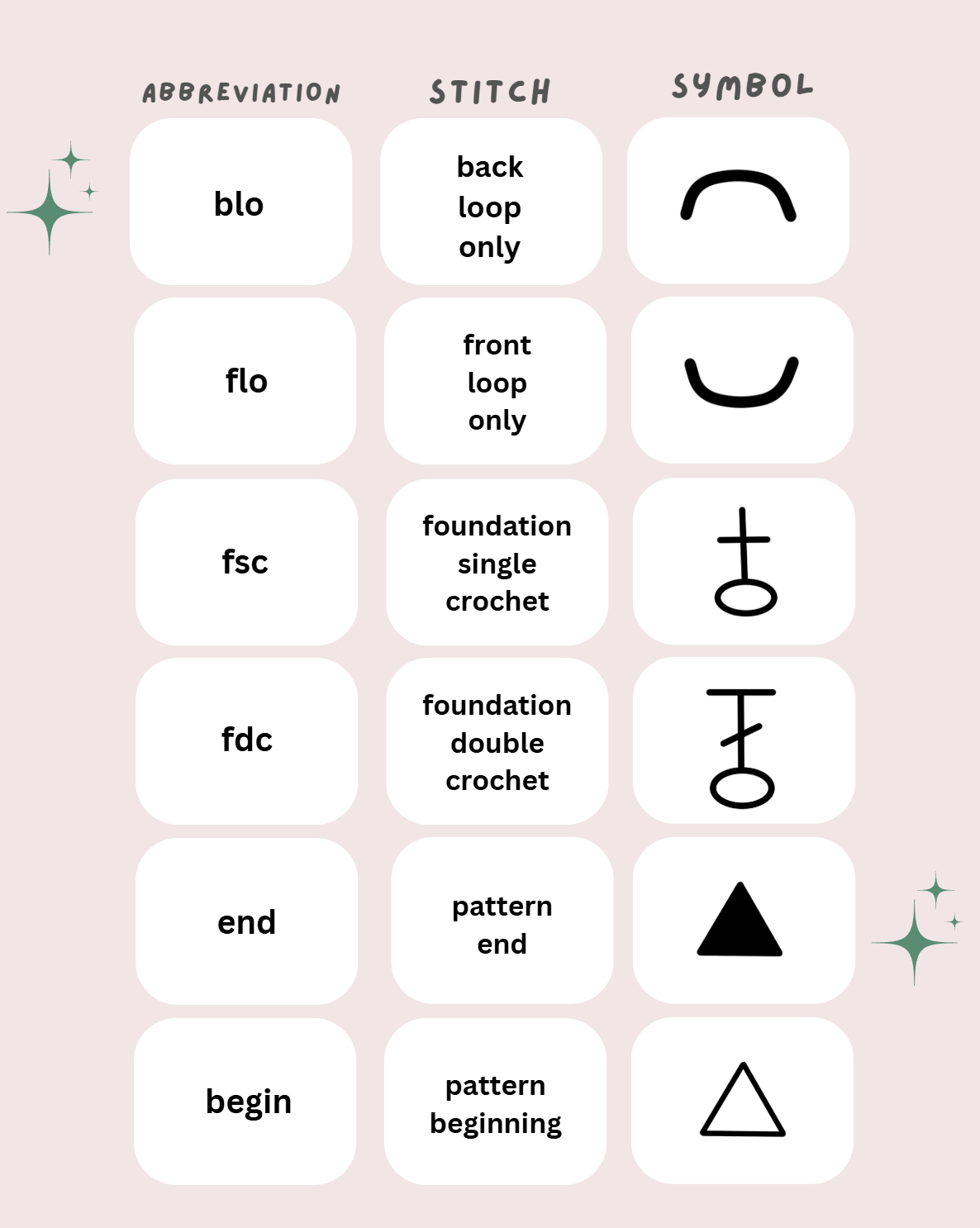
Row vs. Round Symbol Charts
Like written crochet patterns, symbol charts are either worked in rows or rounds.
Row Symbol Charts - Row symbol charts generally work from bottom to top in the same direction you always crochet. These charts are often used to create patterns with a straight edge, such as a scarf or blanket.
Round Symbol Charts - Round symbol charts are worked from the inside out, starting in the center and working counterclockwise (for right-handed crocheters). These charts are often used to create round items such as baby booties, and amigurumi.
Tips for Using Crochet Symbol Charts
- Start by using simple crochet symbol charts - This will help you learn the symbols more quickly. Try to find patterns that have less than 5-10 stitches this way you only need to learn a few symbols at at time.
- Use a cheat sheet - When you start working with crochet symbol patterns it is really helpful to use a cheat sheet. That way when you run into a symbol you don't recognize, you can refer to the cheat sheet for help.
- Notice how the chart symbol can look like the crochet stitch - For example, an oval looks like a chain stitch, and a half double crochet is represented by a 'T' shape, an elongated stitch with a bar across the top. Understanding that the crochet symbols look like the stitches is helpful because it makes the charts easier to understand.
- Practice with charts that have the written instructions included - This is a way for people who already know how to read instructions to check their work as they learn. Use the symbol chart, but check the written instructions to ensure you're doing things right.
- Make sure to check off the rows as you go - When working through a symbol chart, keep track of where you are by marking off the rows as you go. The symbols can become confusing, and this way, you won't lose your place as you work.
More Crochet Resources to Help you Learn
Crochet Abbreviation Master list
Crochet abbreviations are shortened names for crochet stitches. They are also used to describe steps in a pattern that need to be done. Using abbreviations makes it easier to write and follow a crochet pattern because you don't have to write or read every word.
This crochet glossary master list will explain all crochet terms in alphabetical order. A glossary helps you understand the meaning of technical terms, and this list of crochet words will help you understand crochet patterns and projects better.
Do you want to take your crochet projects to the next level but need help knowing where to start? This crochet stitch dictionary will help you learn how to make basic and more complex crochet stitches by showing step-by-step instructions.
I hope you enjoyed this how to read crochet symbol charts page!!
Have Questions? Join My Crochet Guru Facebook Group!
I hope this article was helpful! If you have any additional questions, feel free to join my Crochet Guru Facebook Group. This group is for you to share pictures, ask questions, and help each other out!
